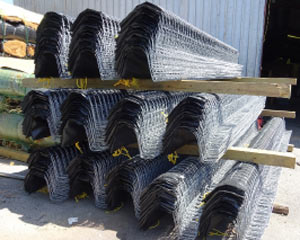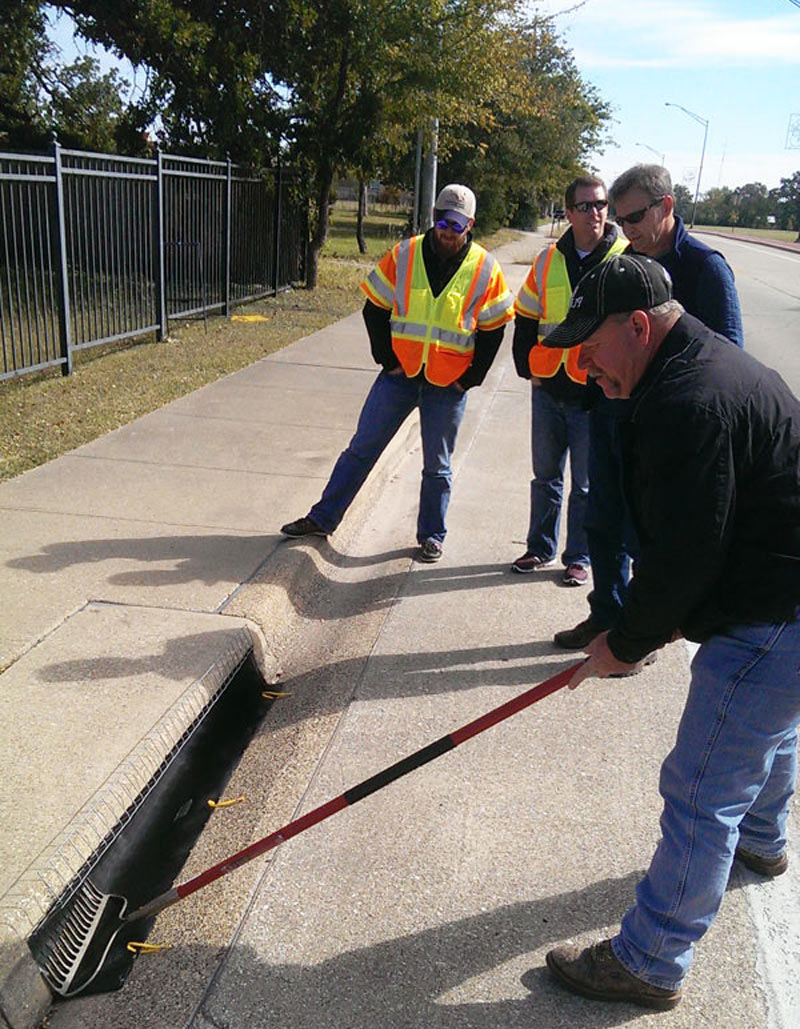Understanding the GeoCurve
Q: What type of debris does the GeoCurve prevent from going into the sewer?
A: GeoCurve effectively captures sand, silt, dirt, pebbles, leaves, grass clippings, human trash and construction debris within its “C” shaped trough. GeoCurve should be checked and cleaned frequently to ensure that the material that it contains does not interfere with the effectiveness of the unit. Check state and local guidelines for maintenance requirements.
Q: How is GeoCurve held in the sewer?
A: GeoCurve uses a compression fit based on the spring tension of its structure to hold itself in place. There are no fasteners needed. This allows the GeoCurve to be installed and removed in seconds.
Q: Do I need to use sandbags with GeoCurve?
A: Unlike filtration logs, GeoCurve is a completely self-contained system that requires no other items for its effective use. Just install in seconds as directed and walk away.
Q: What tools do I need to install GeoCurve?
A: GeoCurve is very fast and easy to install using common tools. To install the inlet filter, all you need is a push broom or garden rake to push the GeoCurve into the throat of the sewer. If the inlet is not a standard width, the GeoCurve can be manually adjusted to fit the width of the opening. You will need pair of wire cutters to trim the wire, scissors to cut the filter medium (if required), a pair of pliers for bending and shaping, and a stapler or hog ring pliers to fasten any additional filter length to the GeoCurve wire grid. For full details, download our Instruction Manual.
Q: How often should GeoCurve be cleaned?
A: GeoCurve should be cleaned at regular intervals to ensure maximum performance. Ensure that your maintenance schedule meets local and state requirements. For example, the City of Austin criteria requires removal of the accumulated silt when it reaches a depth of 2 inches or 1/3 of the inlet height.
Q: How do I remove the sediment and trash out of the GeoCurve?
A: Simply remove the GeoCurve out of the sewer and shake out the trash and sediment into a waste receptacle. If the filtration medium is heavily clogged with sediment, you can use a hose to rinse it out.
Q: What sizes does the GeoCurve come in?
The GeoCurve comes in two standard heights and a variety of widths. The two heights we offer are Standard and Shallow.

GeoCurve – Standard: Recommended for inlet heights of 7” – 12”
GeoCurve – Shallow: Recommended for inlet heights of 4” – 8”
Available Product Widths:
- 10' (most common)
- 8' (2nd most common)
- 7'
- 6'
- 5'
- 4'
- 3'
Q: How long does the GeoCurve Inlet Filter last?
A: The GeoCurve has been designed to be environmentally friendly and is reusable. The device is made of corrosion resistant galvanized steel and top-quality materials. With proper care, the GeoCurve can last for years and many customers tell us that they've used it over and over on many different jobs.
Q: What happens to GeoCurve during a torrential rain event?
A: Geocurve has been hydraulically tested to pass over 150 gallons/minute. If it ever does occur that the flow of water is faster than the filtration system can keep up with, the water automatically flows over the top overflow window of the GeoCurve. Even when that occurs, all large debris is still filtered, as well as the majority of small debris. This capability is the key benefit of GeoCurve's patented design.
Q: The sewer inlet we are working on is of an odd shape, can we use GeoCurve?
A: GeoCurve can be customized with simple hand tools, pliers and work gloves. It can be fashioned to fit virtually any conceivable sewer inlet.
For full details, download our Instruction Manual.
